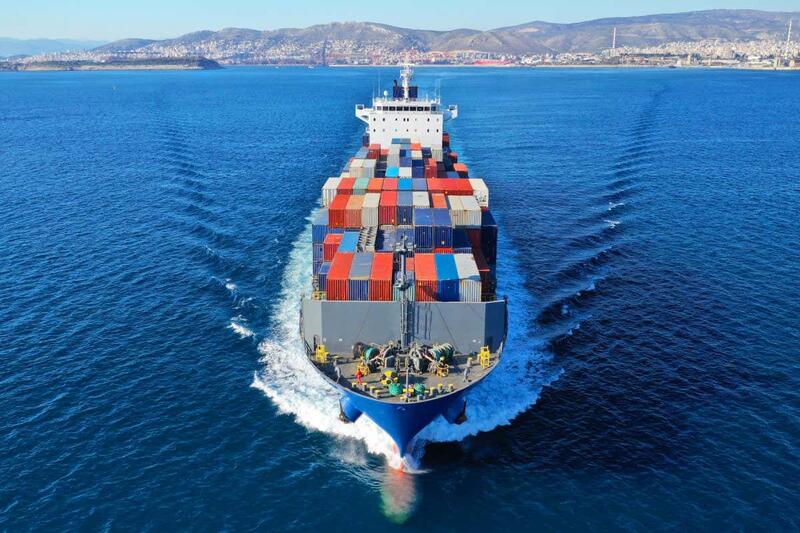
Factors Affecting Transit Time in Freight Shipping
Transit time in freight shipping refers to the duration it takes for goods to be transported from the point of origin to the destination. Understanding and managing transit time is crucial for businesses aiming to maintain efficient supply chains and meet customer expectations. Various factors can influence transit time, making it essential for logistics professionals to be aware of these variables to optimize shipping processes. In this blog, we will explore the key factors affecting transit time in freight shipping and provide strategies to mitigate delays and enhance efficiency.
Distance and Route
-
Geographic Distance
The most obvious factor influencing transit time is the geographic distance between the origin and destination. Longer distances typically result in longer transit times. For example, shipping goods from China to the United States will take significantly longer than shipping within Europe.
-
Route Selection
The chosen route also plays a crucial role. Direct routes are generally faster than indirect routes that involve multiple stops or detours. The choice of route can be influenced by several factors, including:
- Availability of Infrastructure: Highways, rail networks, and ports.
- Political and Economic Stability: Safe and predictable routes are preferred.
- Customs and Border Crossings: Routes with fewer border crossings can reduce delays.
-
Example
Consider a shipment traveling from Germany to Brazil. A direct sea route is likely to be faster than a combined land-sea route that involves multiple transfers and border crossings within different countries.
Mode of Transport
-
Sea Freight
Sea freight is one of the most commonly used modes for international shipping due to its cost-effectiveness for bulk goods. However, it is typically slower compared to air freight, with transit times ranging from several weeks to over a month, depending on the route and port congestion.
-
Air Freight
Air freight is much faster, often taking only a few days for international shipments. It is ideal for high-value or time-sensitive goods, although it is more expensive than sea freight.
-
Rail and Road Freight
Rail and road freight are primarily used for domestic or regional shipping. Rail is suitable for long-distance land transport within continents, while road freight is flexible and ideal for short to medium distances.
-
Example
Shipping electronics from China to the United States by air might take 3-5 days, while sea freight could take 20-30 days.
Carrier Efficiency
-
Carrier Reliability
The efficiency and reliability of the carrier play a significant role in determining transit time. Reputable carriers with a history of on-time deliveries and minimal disruptions can significantly reduce transit times.
-
Fleet Quality
The quality and condition of the carrier's fleet (ships, planes, trucks, trains) can impact transit time. Modern, well-maintained vehicles are less likely to experience delays due to mechanical issues.
-
Example
Choosing a well-known logistics company with advanced tracking systems and a modern fleet can ensure more reliable and faster deliveries compared to a lesser-known, under-resourced carrier.
Weather Conditions
-
Seasonal Variations
Weather conditions can significantly impact transit time. For instance, winter storms can delay road and rail freight, while hurricanes and typhoons can disrupt sea and air freight.
-
Climate-Related Delays
Extreme weather events, such as floods, earthquakes, and wildfires, can cause unexpected delays. Planning for potential weather disruptions and having contingency plans in place is crucial for minimizing their impact on transit time.
-
Example
A shipment from Asia to the United States during the typhoon season may experience delays due to port closures and rough seas, whereas the same route in calmer weather conditions would have a shorter transit time.
Customs and Border Control
-
Customs Clearance
Customs clearance is a critical aspect of international shipping. Delays in customs processing can significantly extend transit times. Efficient customs procedures and proper documentation can help expedite this process.
-
Trade Regulations
Changes in trade regulations, tariffs, and import/export restrictions can also affect transit times. Staying informed about regulatory changes and ensuring compliance can prevent delays at borders.
-
Example
A shipment entering the European Union from a non-EU country might face delays if the customs documentation is incomplete or inaccurate, leading to longer transit times.
Port and Terminal Efficiency
-
Port Congestion
Congestion at ports and terminals can cause significant delays in sea freight. High traffic volumes, labor strikes, or inefficient port operations can lead to long wait times for unloading and loading cargo.
-
Terminal Operations
The efficiency of terminal operations, including the availability of cranes, handling equipment, and skilled labor, affects how quickly cargo can be processed and moved onto the next leg of its journey.
-
Example
A shipment arriving at a busy port like Los Angeles may face delays due to high congestion, whereas a less busy port might offer quicker turnaround times.
Logistics and Supply Chain Coordination
-
Coordination Among Stakeholders
Effective coordination among various stakeholders in the supply chain, including suppliers, carriers, and logistics providers, is essential for minimizing transit times. Clear communication and planning can prevent bottlenecks and ensure smooth transitions between different stages of the shipping process.
-
Inventory Management
Efficient inventory management practices, such as just-in-time (JIT) systems, can reduce delays caused by waiting for stock to be ready for shipment. Proper planning and forecasting can ensure that goods are available and ready for transport when needed.
-
Example
A well-coordinated supply chain with synchronized schedules between the manufacturer, logistics provider, and retailer can reduce overall transit times and ensure timely delivery of goods.
Technological Advancements
-
Real-Time Tracking
The use of real-time tracking technology allows shippers and carriers to monitor the progress of shipments and identify potential delays early. This enables proactive measures to be taken to mitigate delays and optimize transit times.
-
Automation and AI
Automation and artificial intelligence (AI) are revolutionizing logistics and shipping. Automated warehouses, AI-driven route optimization, and predictive analytics can enhance efficiency and reduce transit times.
-
Example
Implementing an AI-driven logistics platform that optimizes routes and schedules based on real-time data can significantly reduce transit times and improve overall efficiency.
Strategies to Optimize Transit Time
Partner with Reliable Carriers
Choosing carriers with a strong track record of reliability and efficiency is crucial. Conducting thorough research and building long-term partnerships with reputable carriers can ensure more predictable transit times.
Invest in Technology
Leveraging advanced technologies, such as real-time tracking, automation, and AI, can enhance visibility and efficiency in the shipping process. Investing in these technologies can lead to significant reductions in transit time.
Optimize Routes and Modes
Carefully selecting the most efficient routes and modes of transport based on the specific needs of the shipment can optimize transit times. Consider factors such as cost, speed, and reliability when making these decisions.
Improve Customs Procedures
Ensuring that all customs documentation is complete and accurate can prevent delays at borders. Working with experienced customs brokers and staying informed about regulatory changes can help streamline the customs clearance process.
Enhance Supply Chain Coordination
Improving coordination and communication among all stakeholders in the supply chain can prevent bottlenecks and delays. Implementing integrated logistics solutions and fostering collaboration can lead to more efficient shipping operations.
Plan for Contingencies
Having contingency plans in place for potential disruptions, such as extreme weather events or port congestion, can help mitigate delays. Regularly reviewing and updating these plans based on past experiences and emerging trends is essential.
Transit time in freight shipping is influenced by a multitude of factors, ranging from geographic distance and mode of transport to carrier efficiency and weather conditions. By understanding these factors and implementing strategies to optimize transit time, businesses can enhance their supply chain efficiency, reduce costs, and improve customer satisfaction. In an increasingly competitive and globalized market, the ability to navigate and manage transit time effectively is a critical component of successful logistics and shipping operations.

